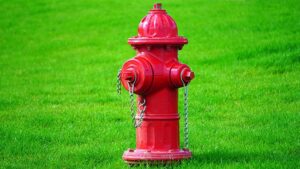Fire and Emergency Access:
Ensuring Adequate Fire Hydrants for Safety
At Unified Studio Architect, we understand that the safety of your building’s occupants and first responders is paramount. Fire and emergency access are critical considerations in any development, and ensuring that fire hydrants are strategically placed and fully functional is a fundamental aspect of fire safety. Fire hydrants provide the essential water supply needed to fight fires and limit damage, and improper placement can result in life-threatening delays during emergencies.
In this blog, we’ll dive deeper into the importance of fire hydrants, the issues that can arise from improper placement, and the steps we take at Unified Studio Architect to ensure compliance with fire safety codes and guarantee the safety of your development.
Why Proper Fire Hydrant Placement is Critical

1. Ensures Prompt Fire Response
In the event of a fire, time is of the essence. Fire hydrants provide the crucial water supply necessary for fire departments to contain and extinguish flames quickly. If fire hydrants are too far away from the building or are difficult to access, firefighters may not be able to provide enough water pressure, potentially delaying the suppression efforts and exacerbating the damage. Proper placement ensures that water is available when it’s needed most, enabling a rapid response that can save lives and property.
2. Meets Fire Code Requirements
Local fire codes outline strict requirements for the placement of fire hydrants, specifying the maximum allowable distance between the hydrants and buildings. These regulations ensure that fire departments can easily access water supplies in emergencies. Non-compliance with these codes could lead to fines, delays, or even shutdowns of the project. By adhering to fire code regulations, we ensure that the development is safe, functional, and compliant with local laws.
3. Reduces Property Damage
The primary goal of fire hydrants is to allow firefighters to quickly control and extinguish a fire before it spreads too far. Properly placed hydrants provide reliable access to water, limiting the damage to the property. If hydrants are placed too far from the building or the coverage is insufficient, a fire may grow uncontrollably before firefighters can access enough water to suppress it. The result could be significant property loss, including structural damage, loss of assets, and even environmental impact.
4. Insurance and Liability Considerations
Failing to comply with fire hydrant placement regulations may result in significant increases in insurance premiums or, in some cases, the inability to secure coverage for the property. Insurance companies evaluate risk based on fire safety features, including hydrant placement, and non-compliance can make a property more vulnerable to catastrophic fire damage. Ensuring that hydrants are properly placed and functional helps reduce risks, lowers insurance costs, and provides a safer environment for all.
Common Issues with Fire Hydrant Placement

1. Exceeding Maximum Distance
Most fire codes specify a maximum distance between fire hydrants and the buildings they protect, typically ranging from 200 to 500 feet, depending on local regulations and the size of the development. If fire hydrants are too far away, firefighters may not be able to access sufficient water to effectively suppress a fire, delaying the response time and increasing the risk of extensive property damage.
2. Insufficient Hydrant Coverage
In large developments, particularly those with multiple buildings or expansive sites, a single fire hydrant may not provide enough water flow to cover the entire area. In these cases, the site may require multiple hydrants strategically placed to ensure adequate coverage. Inadequate coverage could lead to delays, insufficient water supply, or water pressure issues, hindering firefighting efforts.
3. Obstructions or Inaccessible Hydrants
Even if fire hydrants are located within the required distance, their accessibility can be compromised by obstructions such as parked cars, landscaping, fences, or other barriers. These obstacles can delay response times by preventing firefighters from quickly reaching the hydrants. Ensuring that hydrants are free from obstructions is critical to their effectiveness during an emergency.
4. Inadequate Water Pressure
In some cases, even if hydrants are properly located, existing infrastructure may not provide the necessary water pressure for effective firefighting. Low water pressure can hinder the water flow needed to suppress a fire, particularly in taller buildings or large sites with complex water needs. This issue often requires upgrades to local water systems or the installation of supplemental fire protection measures.
How Unified Studio Architect Mitigates Fire Hydrant Placement Issues
At Unified Studio Architect, we take a proactive approach to ensure that our designs meet all fire safety requirements, including fire hydrant placement. Here’s how we mitigate the common issues associated with fire hydrant placement and ensure the safety of the development:
1. Assessing Hydrant Placement Requirements
Before finalizing a site design, we thoroughly assess the local fire code requirements for fire hydrant placement. This involves collaborating with local fire departments and marshals to ensure we comply with the appropriate regulations for distance, water pressure, and coverage. By factoring in these requirements from the beginning, we ensure that the hydrants are placed optimally to provide maximum protection during an emergency.
2. Installing Additional Hydrants for Coverage
If the site is large or a single hydrant does not meet the necessary fire code requirements, we install additional hydrants to ensure proper coverage. A well-distributed network of hydrants guarantees that water is available throughout the development, regardless of where the fire occurs. This proactive measure ensures that no part of the site is too far from a water source, helping to reduce response time and limit fire damage.
3. Exploring Alternative Fire Suppression Systems
In some cases, it may not be possible to install additional hydrants due to site constraints or water availability. In these situations, we explore alternative fire suppression systems to ensure adequate protection, including:
Sprinkler Systems: Installing automatic sprinkler systems throughout the development can help control fires until emergency responders arrive. Sprinklers are a highly effective measure for reducing fire damage in buildings or throughout a site.
Fire Pumps and Tanks: If water pressure is a concern, we recommend the installation of fire pumps or water storage tanks to ensure that sufficient pressure and water flow are maintained for firefighting efforts.
Localized Suppression Systems: For areas that are too far from hydrants, we may incorporate localized fire suppression systems, such as foam-based systems or high-pressure water mist solutions, which can be used in conjunction with hydrants or as standalone systems.
4. Ensuring Unobstructed Access to Hydrants
We ensure that fire hydrants are placed in locations where they are easily accessible and free from obstructions. This includes working with landscaping teams to prevent shrubs, trees, fences, or other barriers from blocking access to the hydrants. Additionally, we ensure clear signage and paving markings to make the hydrants easily identifiable for emergency responders.
5. Water Pressure and Infrastructure Evaluation
If water pressure is a concern, we work with local utility providers to evaluate the existing infrastructure and determine whether upgrades are necessary. We may suggest adding extra water lines, boosting pump systems, or installing pressure regulators to ensure the water supply meets the required standards for firefighting operations.
6. Ongoing Coordination with Local Fire Authorities
Throughout the design and permitting process, we maintain ongoing communication with local fire authorities to ensure our designs meet or exceed their expectations. This collaboration helps prevent issues during inspections and ensures that the development complies with all fire safety codes.
Conclusion
At Unified Studio Architect, we are dedicated to creating developments that prioritize fire safety. By ensuring proper fire hydrant placement, exploring alternative fire suppression systems, and maintaining open communication with fire authorities, we help guarantee that your development is safe, code-compliant, and prepared for emergency situations.
If you are working on a development project and need assistance ensuring that fire and emergency access are properly planned, Unified Studio Architect is here to guide you through the process. Our experienced team is committed to designing safe, efficient, and compliant fire safety solutions that protect both lives and property. Contact us today to learn more about how we can help you meet all fire safety requirements for your project and ensure that your development is fully prepared for any emergency.
